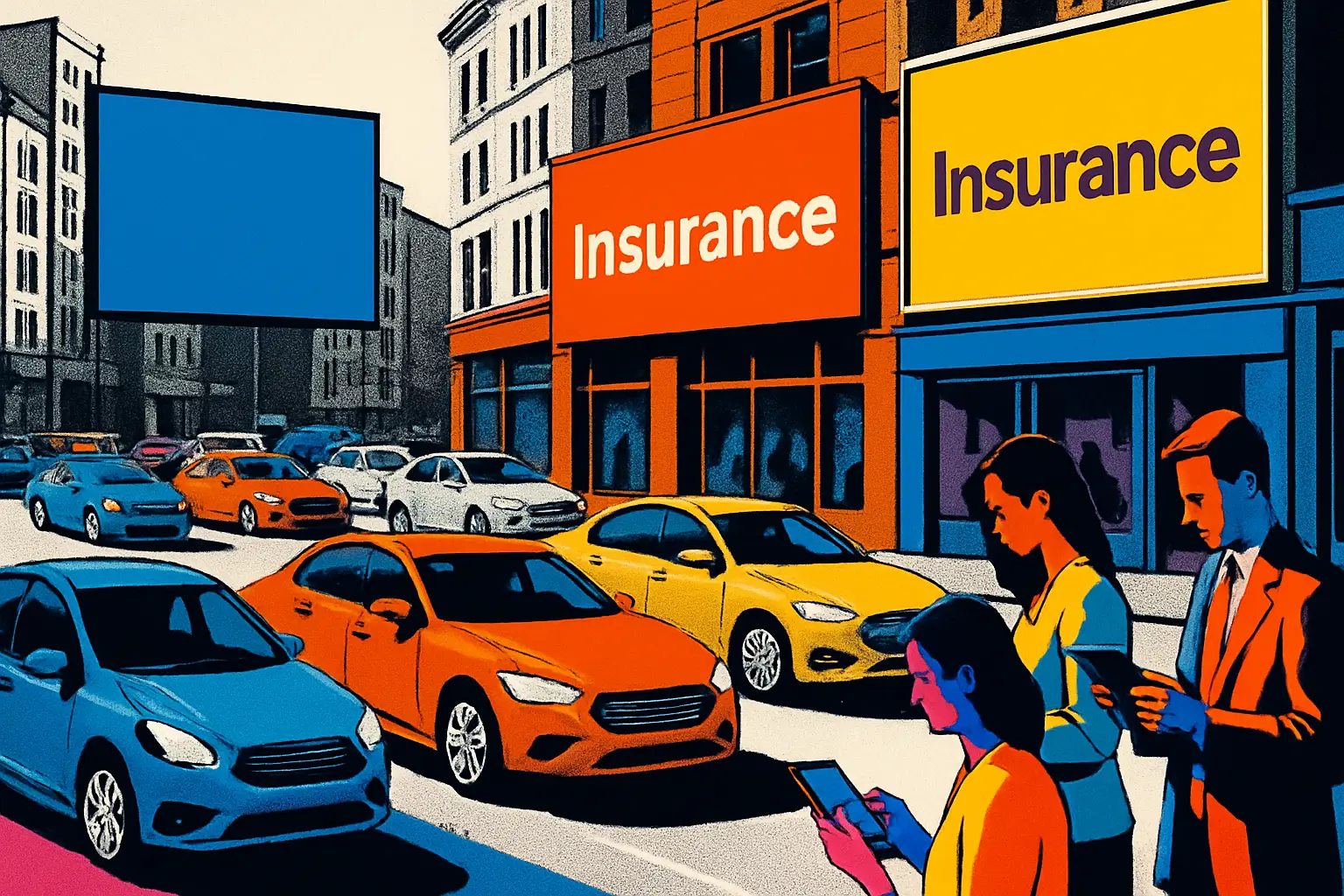car insurance fact
UK car insurance is falling overall, but not for everyone. Learn key costs, regional gaps, and simple steps to get a fair price with switcha.
Headline - what has really changed in 2025
Look, premiums are finally easing. Average comprehensive cover is down 16% year on year to £757, the lowest in two years. That is good news, but young drivers and Londoners still face stiff prices.
Prices are falling overall. Your personal risk still decides your deal.
Sources: WTW/Confused.com Price Index, ABI, Uswitch.
The short story
Car insurance costs have dropped for many UK motorists, yet claims costs remain high and uneven. Young drivers can still pay over £2,000, and London stays pricey. Knowing the basics, comparing properly, and tweaking cover can cut your bill without weakening protection.
Who should read this
- New and returning drivers fed up with guesswork and jargon.
- Parents helping young drivers get legal without rinsing the family budget.
- City commuters battling London rates, and suburban drivers benchmarking their price.
- Anyone due a renewal in the next 8 weeks who wants a no-faff plan.
The nuts and bolts you need to know
- Average comprehensive premium: £757, down 16% year on year, the lowest in two years. Source: WTW/Confused.com Price Index (https://www.wtwco.com/en-gb/news/2025/06/car-insurance-premiums-continue-dramatic-fall-with-teen-drivers-seeing-biggest-savings)
- Young drivers 17-24: average £2,217, with London up to £3,108. Young males pay roughly 35% more than young females. Source: Uswitch (https://www.uswitch.com/car-insurance/car-insurance-for-young-drivers/young-drivers-insurance-statistics/)
- Claims remain high: UK insurers paid £3.1bn in Q2 2025, with repair costs up £100m quarter on quarter due to tech and inflation. Source: ABI (https://www.abi.org.uk/news/news-articles/2025/7/motor-premiums-fall---but-repair-and-theft-costs-keep-revving-up-claims/)
- Regional gaps: Inner London averages £1,185, South West about £515. Source: WTW/Confused.com.
Key terms in plain English:
- Voluntary excess: the extra amount you choose to pay if you claim. Higher excess can lower your premium, but only if you can afford it on a bad day.
- Telematics: a black box or app that tracks driving. Good for new drivers who drive safely and at low-risk times.
- Comprehensive vs third party: comprehensive usually offers the broadest cover and is often cheaper than third party for many drivers.
- No claims discount: a price cut for not claiming. Protecting it can be worth it at higher levels.
Your paths to lower prices
- Shop early: renew 21-30 days before your policy ends. Last-minute buyers often pay more.
- Adjust mileage honestly: overestimating adds cost; underestimating risks rejected claims.
- Consider telematics if you are under 25 or have limited annual mileage.
- Add an experienced named driver if appropriate. Never front. Lying can void cover.
- Pick a car with lower insurance group and standard security.
- Pay annually if you can. Paying monthly is often a form of credit and adds interest.
- Compare compulsory and voluntary excess together. Find the sweet spot you can afford.
- Remove add-ons you will not use. Keep windscreen and legal if they are good value.
Quick comparison table
| Option | Typical saving potential | Best for | Watch-outs |
|---|---|---|---|
| Early renewal | 5-15% | Most drivers | Prices can move daily, set alerts |
| Telematics | 10-30% | Young or low-mileage | Curfews, data-driven price swings |
| Higher excess | 5-12% | Confident drivers | Affordability at claim time |
| Add named driver | 5-10% | Young drivers | Must genuinely share the car |
| Pay annually | 5-8% | Stable budgets | Upfront cash needed |
What it costs, and why it moves
- Average premium is down to £757, a 16% drop in a year. That reflects increased competition and easing pressures that spiked costs in 2023.
- Claims are still pricey. Advanced sensors, ADAS calibrations, and theft losses keep payouts high. ABI reports £3.1bn paid in Q2 2025 with repair costs up £100m from Q1. That puts a floor under how far prices can fall and may create bumps later.
- Young drivers remain the exception. Averages above £2,200 are common, and London can top £3,100 for 17-24s. Safer cars, telematics, and clean driving records matter more than ever here.
Standout line: Cheaper overall does not mean cheap for everyone.
Who qualifies for what
- Age and experience: New or young drivers face higher base rates. Telematics can offset risk if you drive safely.
- Location: Inner London tends to the highest premiums; South West is among the lowest. Garaging, alarms, and parking off-road help in higher risk postcodes.
- Car choice: Lower insurance groups and factory security reduce cost. Heavily modified cars raise it.
- Usage: High annual mileage, business use, or night driving can nudge prices up.
- Claims and convictions: Recent faults or points increase premiums. Time heals, but be accurate.
Simple steps to a better price
- Start quotes 28 days before renewal date.
- Check vehicle group, mileage, and job title details.
- Compare comprehensive and third party prices.
- Test different voluntary excess levels sensibly.
- Remove weak add-ons, keep the useful ones.
- Try telematics if under 25 or low mileage.
- Add a suitable named driver if genuine.
- Pay annually if the maths works for you.
The upsides and downsides
Pros:
- Falling average prices give most drivers a break.
- Plenty of levers to nudge your premium down.
- Telematics rewards careful driving quickly.
Cons:
- Repair and theft costs keep claims high, limiting falls.
- Young drivers and Londoners still pay a premium.
- Add-ons and monthly credit can quietly inflate costs.
Before you press buy
- Double-check assumptions: annual mileage, usage type, parked location, and job title wording can swing price and validity.
- Read the excess rules carefully. You could face both compulsory and voluntary excess on a claim.
- Scan exclusions: courtesy car, windscreen cover, personal injury, key cover, and European use vary wildly.
- Confirm no claims discount proof process and whether it is protected.
- For telematics, check curfews, scoring, and cancellation fees.
If this does not fit, try these
- Car choice rethink: move to a lower group model with standard safety tech.
- Learning curve: take Pass Plus or accredited courses that some insurers recognise.
- Third party vs comprehensive: run both quotes. Often, comprehensive is cheaper.
- Car sharing and public transport: delay owning until premiums drop with age and history.
- Short-term cover: for occasional use only, not a daily driver workaround.
Regional snapshot table
| Region | Typical average premium | Key driver |
|---|---|---|
| Inner London | ~£1,185 | Higher theft and claims frequency |
| South West | ~£515 | Lower traffic density, fewer claims |
| UK Average | £757 | Broad market trend down 16% |
| Young drivers London | ~£3,108 | Higher risk profile and location |
Sources: WTW/Confused.com, Uswitch.
FAQs
Q: Are prices really falling for everyone? A: No. The UK average is down 16% to £757, but young drivers and Londoners remain outliers with much higher costs.
Q: When should I shop for renewal? A: Aim 21-30 days before your policy ends. Prices are typically better than last-minute quotes.
Q: Is telematics worth it? A: If you are 17-24 or low mileage, often yes. Check curfews, driving windows, and how your score affects renewal.
Q: Should I raise my excess? A: Only to a level you can afford on a bad day. It can lower the premium, but you will pay more if you claim.
Q: Why is London so expensive? A: Higher traffic density, theft rates, and claims frequency push prices up compared to the South West and other regions.
Q: Do monthly payments cost more? A: Usually yes, because it is credit with interest. If you can, pay annually.
Ready to sort it with switcha
Here is the plan: set a renewal reminder for 28 days out, gather your details, and run a clean comparison. Test excess levels, consider telematics if you are under 25, and ditch weak add-ons. If you are in a pricey area, focus on security and parking. Need a hand? switcha can guide you step by step.
Small print you should actually read
This guide is for general information in Great Britain and is not financial advice. Pricing examples are averages and can change. Always check policy terms, excesses, and exclusions with your insurer or broker before you buy. Sources: WTW/Confused.com, Uswitch, ABI.
Get smarter with your money
Join thousands of Australians who are taking control of their financial future
FAQs
Common questions about managing your personal finances
Begin by tracking every expense for one month. Use an app or spreadsheet. No judgment. Just observe your spending patterns.
Cancel unused subscriptions. Cook at home. Compare utility providers. Small changes add up quickly.
Aim for 20% of your income. Start smaller if needed. Consistency matters more than the amount.
Choose reputable apps with strong security. Read reviews. Check privacy policies. Protect your financial data.
Pay bills on time. Keep credit card balances low. Check your credit report annually. Be patient.
Still have questions?
Our team is ready to help you navigate your financial journey
More financial insights
Explore our latest articles on personal finance and money management




